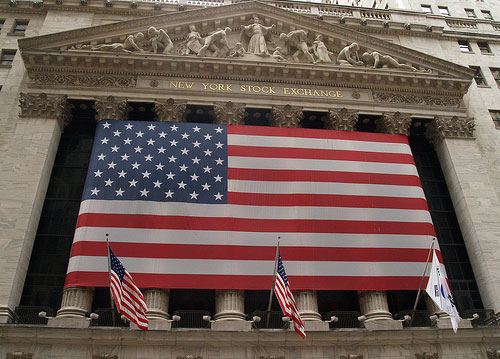
A Stock Index GIC or a Market Linked GIC is a Guaranteed Investment Certificate (Term Deposit) that guarantees our capital investment but offers the possibility of a higher rate of return. Our capital investment in a Market Linked GIC is always guaranteed, but our interest is to be determined based on the performance of a particular Stock Index. Depending on the Stock Market performance we may have a very high rate of return, or we may have no rate of return at all. If the Stock Market has a negative return over the entire term of our investment we will have a 0.0% rate of return, but at least we can never loose any of our initial capital investment. The interest rate on a Market Linked GIC is not determined until the end of the investment term. The investment term on Market Linked GICs is usually 3 or 5 years, this is because investing in the Stock Market is usually for the long term.
A Market Linked GIC is the perfect solution for new investors or for investors who want to guarantee their initial investment but not thier interest rate. This type of investment is perfect for people who may not yet be comfortable with the possible fluctuations in the value of their investment due to market volatility, but who still want market exposure. A Market Linked GIC is a great way for investors to learn about the fluctuations in the market and how it can affect their personal rate of return. However, they will never take the risk of losing their capital investment.
The interest rate on a Market Linked GIC can be calculated in one of two ways. The first option for Market Linked GIC interest calculation is an average market return over the entire investment term. The advantage of this interest calculation is that if the average market return is low in the first year or the first two years the client has the chance to make up their losses over the remainder of the investment term. I always tell clients that their Market Linked GIC investment is for 3 or 5 years; and the odds of the overall market average rate of return being negative for 5 consecutive years is very low.
The second option for the interest rate calculation on a Market Linked GIC is an average of each individual year over the investment term. If the Market Linked GIC is for 3 years, each year an interest rate is determined for the GIC based on the average market return. As an example the first year could have a 2.0% rate of return, the second year could have a 3.0% rate of return, and the third and final year could have a 4.0% rate of return. This means that the average rate of return for the 3 year period would be 3.0%. In most cases the Financial Institution offers us the option to lock in our interest rate after two years. In our example after two years our average interest rate of return would be 2.5%, If we think that the interest rate for the third year is going to be lower than 2.5% we can lock in our interest rate to guarantee that it does not go down in the third year based on the overall market performance.
Some Financial Institutions also offer Guaranteed Investment Certificates that are linked to the performance of individual Mutual Funds, as opposed to the Stock Market as a whole. Common Mutual Fund Linked GICs are Dividend Mutual Fund GICs as well as Growth Mutual Fund GICs.
Photo by Dannels



I’m pretty sure “guaranteed” and “stock market investment” really don’t ever belong in the same sentence. In theory, GICs are sound, but given the complete lack of transparency and accountability in the banking system, you have to wonder what happens if the institution that sells them goes under. In other words, the fine print of that guarantee should be scrutinized exceedingly closely.
Also, they should be compared to the closest “safe” equivalent, which would be TIPS (RRBs).
Behind the expensive suits and the talking heads and the constant reassurances there is a simple truth. The Stock Market is and has always been a suckers game!
Consider the following:
1. The S&P 500 is a big barrel of money. When the money gets to a certain level, the Psychopaths drain it off. In order to get it to a certain level, you have to buy the B.S. and turn your life savings over to them.
2. Only a few insiders actually buy and sell stocks. These institutional investors and market makers bring the market down by selling stock into the market.
3. The S&P 500 represents 75 cents of every dollar invested in the stock market. That means 500 company stocks to sell when they want the market to crash. Not that hard to accomplish when you think about it.
4. The other branch of the Satanic Psychopaths catch all that falling money buy buying Put Options against the S&P. AS the S&P goes down, they are capturing all of that lost wealth.
5. My Clients have made anywhere from 20-50% returns over the last week by also shorting the stock market. One client made $2400 profit from a $3500 investment. Can your stock broker do that? If so, why aren’t they doing it? Instead, they are standing idly by while you lose money!